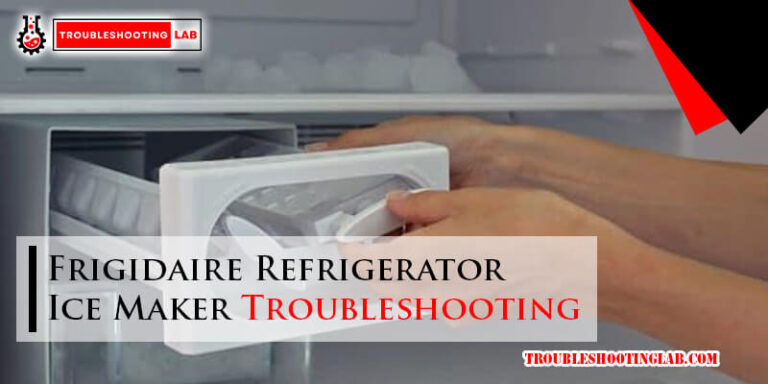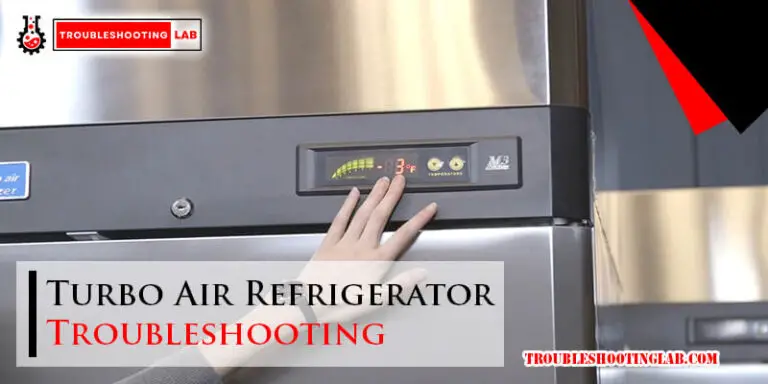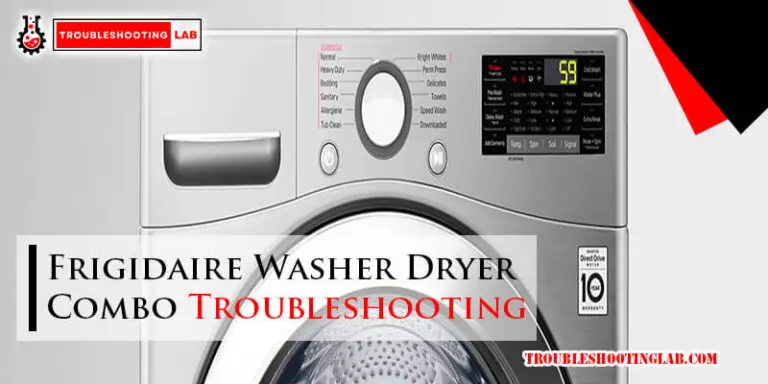Badger Insinkerator Troubleshooting: Quick Fixes
To troubleshoot a Badger Insinkerator, insert the Jam-BusterTM wrench into the bottom of the disposer and turn it back and forth until it turns freely. Check the overload protector and gently press the button.
If the disposal hums but doesn’t turn, it may be jammed and can be fixed by following a few steps. First, turn off the power to the disposal and try turning the blades manually with an Allen wrench. If that doesn’t work, use tongs or pliers to remove any objects causing the jam.
Reset the disposal and turn it on again. If the problem persists, it may require professional repair or replacement.
Jammed Disposer: How To Fix It
If your Badger Insinkerator disposer is jammed, don’t panic! We’ve got you covered with some easy troubleshooting steps to get your disposer back up and running in no time. Follow these simple instructions to fix a jammed disposer:
Insert the Jam-BusterTM wrench into the bottom of the disposer
In order to loosen the jam in your Badger Insinkerator disposer, you need to use the Jam-BusterTM wrench. Insert the wrench into the bottom of the disposer, making sure it is securely in place.
Turn The Wrench Back And Forth To Loosen The Jam
Once the wrench is properly inserted, turn it back and forth, applying gentle force. This motion helps to loosen the jammed particles and allows the disposer to spin freely again. It’s important to be patient and persistent during this step.
Apply Gentle Force If Necessary
If the jam doesn’t loosen easily, it’s okay to apply a little more force with the wrench. The Jam-BusterTM wrench is designed to bend before causing any damage to the disposer, so don’t worry about exerting some pressure.
Continue Working The Wrench Until It Turns Freely In Complete Circles And Both Directions
Keep turning the wrench back and forth until you feel the disposer starting to turn freely in complete circles and in both directions. This indicates that the jam has been successfully cleared.
Check The Overload Protector And Press The Button If Needed
Once the jam is cleared, it’s important to check the overload protector on the bottom of the disposer. If the button is pressed down or not in its usual position, gently press it to reset the protector. If it doesn’t stay up, wait for ten minutes and try pressing it again.
By following these steps, you will be able to fix a jammed Badger Insinkerator disposer and restore it to full functionality. Remember to always exercise caution and follow the instructions carefully to avoid any injuries. Happy troubleshooting!
Leaking From Badger Insinkerator: What To Do
If you’ve noticed a leak coming from your Badger Insinkerator garbage disposal, it’s important to address the issue promptly to avoid further damage. Leaks can occur due to a variety of reasons, so it’s essential to identify the source and take appropriate action. In this section, we’ll guide you through the troubleshooting process step-by-step to help you resolve the leaking issue with your Badger Insinkerator.
Identify The Source Of The Leak
The first step in troubleshooting a leaking Badger Insinkerator is to identify the source of the leak. Leaks can occur in various areas, such as the connection points, rubber gaskets, or even cracks in the disposer unit. Take a close look at your garbage disposal and check for any visible signs of water or moisture. Focus on areas like the bottom of the unit, around the connections, and the rubber gaskets.
Tighten Any Loose Connections
If you discover a loose connection as the source of the leak, tightening it may solve the problem. Use an appropriate tool such as pliers or a wrench to securely tighten the loose connection. Take care not to overtighten, as this may cause further damage.
Replace Damaged Or Worn Out Rubber Gaskets
Another common cause of leaks in a Badger Insinkerator is damaged or worn-out rubber gaskets. Over time, these gaskets can deteriorate, resulting in water leakage. Check the rubber gaskets for any signs of wear or damage and replace them if necessary. Be sure to turn off the power supply to the garbage disposal before attempting to replace the gaskets.
Inspect And Fix Any Cracks In The Disposer Unit
In some cases, leaks may be caused by cracks in the disposer unit itself. Carefully inspect the unit for any visible cracks or damage. If you find any, consider replacing the disposer unit to prevent further leaks and ensure optimal functionality.
Consider Professional Repair Or Replacement If The Issue Persists
If you’ve gone through the troubleshooting steps outlined above and the leak persists, it may be time to seek professional assistance. A licensed plumber or appliance repair technician can diagnose the issue accurately and provide the necessary repairs or recommend a replacement if needed.
Resolving a leaking issue with your Badger Insinkerator garbage disposal is essential to maintain its efficiency and prevent water damage. By following the troubleshooting steps outlined above, you can quickly identify and address the source of the leak, ensuring your garbage disposal functions properly once again.
Repairing The Disposal Blades
Turn Off The Power And Unplug The Disposer
Before attempting any repairs on your Badger Insinkerator disposal blades, it is crucial to prioritize safety. Start by turning off the power to the disposer. Locate the electrical circuit breaker and switch it off to ensure that there is no electricity flowing to the unit. Next, unplug the disposer from the wall socket to eliminate any risk of accidental power supply. Taking these precautionary measures will safeguard you from potential electrical hazards during the troubleshooting process.
Inspect The Blades For Any Obstructions Or Debris
Once the power is cut off and the disposer is unplugged, it’s time to inspect the disposal blades. Thoroughly examine the blades for any obstructions or debris that may be causing the problem. Look out for items such as bones, utensils, or oversized food particles that could be stuck in the blades. Use a flashlight to get a clear view and ensure there are no hidden blockages. Identifying and removing any foreign materials will help restore the functionality of the disposal blades.
Clear Out Any Clogs Or Blockages Using Pliers Or Tongs
If you spot any clogs or blockages in the disposal blades during the inspection, it’s important to clear them out. You can use a pair of pliers or tongs to carefully reach into the disposal unit and remove any lodged objects. Be cautious not to damage the blades or other components while doing so. In case the clogs are stubborn, gently rotate the blades using the pliers or tongs to dislodge the obstruction. A little patience and effort will go a long way in restoring the proper function of the disposal blades.
Sharpen Dull Blades With A Proper Sharpening Tool
Dull blades can significantly affect the performance of your Badger Insinkerator disposal. If you notice that the blades are not slicing efficiently or are struggling to shred food waste, it might be time to sharpen them. Use a proper sharpening tool, specifically designed for garbage disposal blades, to bring back their sharpness. Follow the manufacturer’s instructions and carefully sharpen each blade individually. This simple maintenance step can greatly enhance the effectiveness and longevity of your disposal blades.
Test The Disposer To Ensure The Blades Are Working Properly
After completing the necessary repairs and maintenance on the disposal blades, it is vital to test the disposer and ensure the blades are working properly. Reconnect the power and plug the disposer back into the wall socket. Turn on the water and switch on the disposer. Observe if the blades are functioning smoothly and efficiently, shredding and disposing of food waste as intended. Listen for any unusual noises or vibrations that may indicate further issues. If everything appears to be working correctly, you have successfully repaired the disposal blades of your Badger Insinkerator.
Troubleshooting Insinkerator Evolution: Common Problems And Solutions
The Insinkerator Evolution is a reliable and efficient garbage disposal system that helps keep your kitchen clean and healthy. However, like any appliance, it may encounter issues over time. In this section, we will discuss some common problems that you may face with your Insinkerator Evolution and provide simple solutions to resolve them. By understanding these troubleshooting techniques, you can quickly and easily fix any concerns that arise, saving you time, money, and frustration.
Excessive Noise During Operation
If you notice that your Insinkerator Evolution is making unusual or excessive noise during operation, it may be a cause for concern. The noise could be due to loose parts, worn-out blades, or a foreign object stuck inside the disposal. To troubleshoot this issue, follow these steps:
- Turn off the power to the garbage disposal at the circuit breaker.
- Use a flashlight to inspect the disposal for any foreign objects, such as utensils or debris. If you find any, carefully remove them using tongs or pliers.
- Check for any loose parts or mounting screws. If you find any, tighten them using a screwdriver.
- If the noise persists, it may indicate worn-out blades. In this case, consider replacing the blades or contacting a professional for assistance.
Clogs And Blockages
A common problem with garbage disposals is clogs and blockages. If your Insinkerator Evolution is not draining properly or is experiencing frequent backups, there may be a clog in the system. Follow these steps to troubleshoot and resolve the issue:
- Turn off the power to the garbage disposal.
- Place a bucket or pan beneath the disposal to catch any water or debris that may leak out.
- Use a plunger to create suction and dislodge the clog. Press the plunger firmly over the drain opening and rapidly pump it up and down several times.
- If the plunger doesn’t work, use a plumbing snake to break up the clog. Insert the snake into the drain opening and rotate it clockwise to loosen and remove the blockage.
- Once the clog is cleared, turn on the water and run the disposal to ensure proper drainage.
Slow Draining
If your Insinkerator Evolution is draining slowly, it may be due to a partially clogged drain pipe or a problem with the internal plumbing. Follow these steps to troubleshoot and address the issue:
- Turn off the power to the garbage disposal.
- Check the drain pipe for any visible clogs or obstructions. If you find any, remove them using pliers or a plumbing snake.
- Pour a mixture of equal parts vinegar and baking soda down the drain. Allow it to sit for a few minutes, then flush it with hot water to clear any residual build-up.
- If the slow draining persists, you may need to consult a plumber to inspect and address any underlying issues with the plumbing system.
Jammed Or Stuck Blades
If your Insinkerator Evolution has jammed or stuck blades, it may not be able to function properly. To resolve this issue, follow these steps:
- Turn off the power to the garbage disposal.
- Insert an insulated hex wrench or the provided Jam-Buster wrench into the bottom of the disposal. Turn the wrench back and forth in both directions to free the blades.
- If the blades are still stuck, press the reset button located on the bottom of the disposal. Wait for ten minutes and try again.
- If the problem persists, it may indicate a more significant issue, and you should consider contacting a professional for assistance.
Overheating And Resetting Issues
In some cases, your Insinkerator Evolution may overheat or experience resetting problems. To troubleshoot this issue, follow these steps:
- Turn off the power to the garbage disposal.
- Check the overload protector, which is located on the bottom of the disposal. If it has tripped, you will find a button that needs to be pressed to reset it.
- Gently press the reset button. If it does not stay up, wait ten minutes and try again.
- If the reset button continues to trip or the disposal overheats frequently, it may indicate an electrical or mechanical issue. In this case, it is best to contact a qualified technician for further inspection and repair.
By following these troubleshooting tips, you can address common problems with your Insinkerator Evolution and keep it running smoothly. Remember to always prioritize safety by turning off the power before attempting any repairs or maintenance. If you are unsure or uncomfortable with any troubleshooting steps, it is recommended to seek professional assistance.
Proper Maintenance And Care Tips For Badger Insinkerator
Avoid Putting Non-food Items Or Hard Objects Into The Disposer
One of the most important tips for proper maintenance and care of your Badger Insinkerator is to avoid putting non-food items or hard objects into the disposer. These items can cause damage to the blades or jam the unit, leading to costly repairs. Examples of non-food items and hard objects to avoid disposing of include plastic utensils, bottle caps, glass, metal, and bones. By being mindful of what you put into the disposer, you can prevent unnecessary damage and extend the lifespan of your Badger Insinkerator.
Use Cold Water When Running The Disposal
When using your Badger Insinkerator, it is important to use cold water rather than hot water. Cold water helps solidify any grease or oil that may be present in the disposer, making it easier for the blades to chop them up and prevent clogs. Additionally, cold water helps prevent overheating of the motor, ensuring optimal performance and prolonging the life of the Disposer. Remember to always run the cold water for a few seconds before and after running the disposal to ensure proper functionality.
Regularly Clean And Deodorize The Disposer With Ice Cubes And Citrus Peels
To keep your Badger Insinkerator clean and odor-free, it is recommended to regularly clean and deodorize the unit. One effective method is to use ice cubes and citrus peels. Simply fill an ice cube tray with a mixture of water and vinegar, and freeze it. Once frozen, drop a few ice cubes down the disposer while it’s running. The ice helps to clean the blades and remove any built-up debris, while the vinegar helps to eliminate any unpleasant odors. Adding some citrus peels, such as lemon or orange, can add a fresh scent to your disposer as well.
Avoid Disposing Of Fibrous Or Starchy Foods That Can Cause Clogs
Another important tip for maintaining your Badger Insinkerator is to avoid disposing of fibrous or starchy foods that can cause clogs. Fibrous foods like celery, corn husks, and onion skins can get tangled around the blades, leading to a blockage. Starchy foods like pasta, rice, and potato peels can expand when exposed to water, creating a gelatinous mass that can clog the pipes. It is best to dispose of these types of food waste in the trash or compost bin rather than in the disposer to prevent potential clogs and damage to your unit.
Schedule Professional Maintenance And Inspections To Prevent Major Issues
While regular maintenance and care are essential, it is also important to schedule professional maintenance and inspections for your Badger Insinkerator to prevent major issues. A professional plumber or technician will be able to identify any potential problems, such as leaks or worn-out parts, before they escalate into more significant and costly repairs. They can also provide expert advice on proper usage and maintenance of your disposer. Scheduling regular inspections and maintenance is a proactive approach to ensure the longevity and optimal performance of your Badger Insinkerator.
Frequently Asked Questions
What Does It Mean When Your Garbage Disposal Just Hums?
If your garbage disposal just hums and doesn’t turn, it means there is likely a clog or jam in the motor. You can fix it yourself by inserting a wrench into the bottom of the disposer and turning it back and forth until it turns freely. If it still doesn’t work, you may need to call a professional plumber.
How Do You Fix A Garbage Disposal That Hums?
To fix a garbage disposal that hums, follow these steps: 1. Insert the Jam-Buster wrench into the bottom of the disposer and turn it in both directions. 2. If the wrench doesn’t turn easily, use some force, as it’s designed to bend before damaging the disposer.
3. Continue working the wrench until it turns freely in complete circles and both directions. 4. Check the overload protector on the bottom of the disposer and press the button gently. 5. If it doesn’t stay up, wait ten minutes and try again.
Why Is My Garbage Disposal Humming But Not Working?
If your garbage disposal is humming but not working, it may be jammed. To fix this, turn off the power and unplug the disposal. Insert the Jam-Buster wrench into the bottom of the disposer and turn it back and forth until it turns freely.
Check the overload protector on the bottom and press the reset button. If the problem persists, call a plumber.
How Do You Fix A Jammed Badger Garbage Disposal?
To fix a jammed Badger garbage disposal, insert the Jam-BusterTM wrench into the bottom of the disposer and turn it back and forth forcefully. Keep working the wrench until it turns freely in both directions. Check the overload protector on the bottom and gently press the button.
Retry after waiting ten minutes if needed.
Why Is My Badger Insinkerator Not Working Properly?
If your Badger Insinkerator is not working properly, it could be due to a clog or jam in the motor.
Conclusion
Troubleshooting a Badger Insinkerator doesn’t have to be a daunting task. By following a few simple steps, such as using the Jam-BusterTM wrench and checking the overload protector, you can easily fix common issues like clogs or jams. Remember to be patient and give the disposal time to reset if necessary.
With these tips, you’ll have your Badger Insinkerator up and running smoothly again in no time. Happy troubleshooting!






